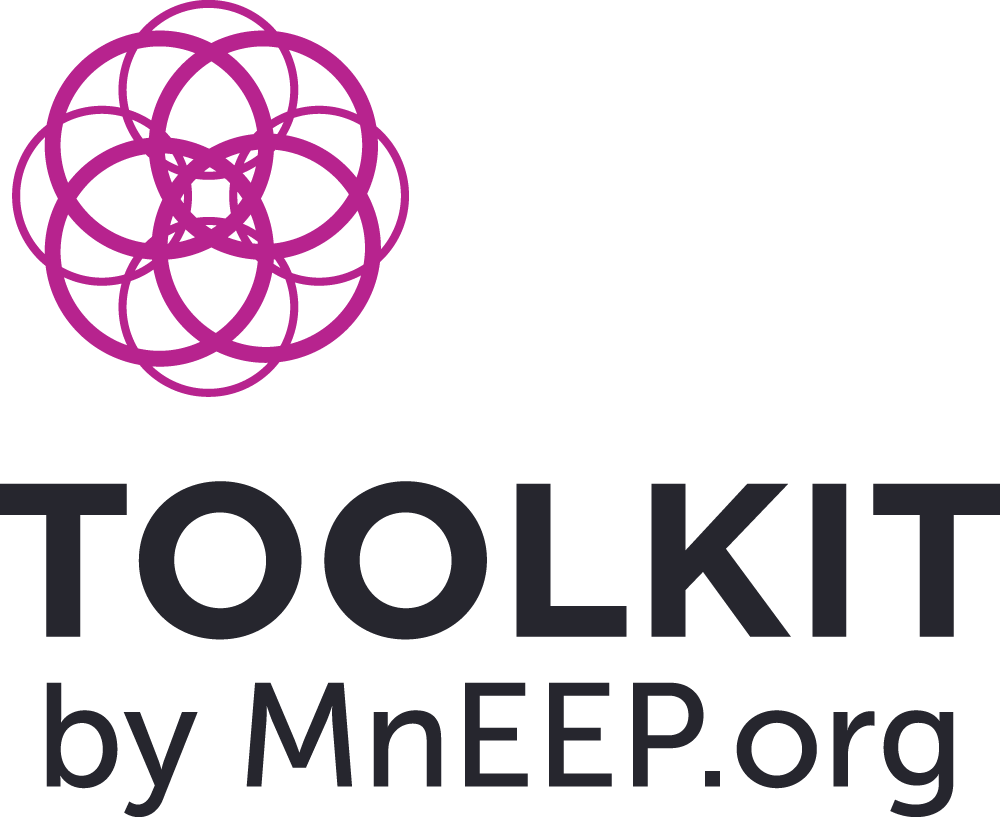School Climate & Racial Equity: Parent Actions
A toolkit for advocating
for your child
Get the tools you need as parents to build racial justice in Minnesota classrooms and advocate for your child’s rights.
In this Toolkit

“As the single mother of three young children, I can’t often make it to lobbying events or school district meetings. So I focus on small but impactful changes that help my kids and my family. One way I do this is by preparing for meetings so that I know how to best advocate for my child—especially if I think they’re being treated unjustly.”
Your child's rights
Every child in Minnesota has the right to an education. Learn more about what that means for your child.
All kids living in Minnesota have the right
to a free public education.
Understanding the Law
The Minnesota Constitution requires that all kids are given equal educational opportunity to an education, regardless of their race, ethnicity, religion, or sex, or whether they have disabilities, are rich or poor, or a citizen or non-citizen.
In 1993, the Minnesota Supreme Court elevated education to a “fundamental right,” making it in fact a “a mandate” on the Legislature. In other words, every child has fundamental right to a public education in Minnesota. And the state is required to provide it to them.
Learn more about students’ rights to an education from the ACLU.
Learn more about due process for students who are suspended.
When can a child be removed from the classroom?
Every school district in Minnesota can determine its own policy for dismissal.
In Minnesota, each school board in every district (there are 336 districts serving nearly 850,000 students) must determine its own policy for “grounds for which a student may be removed.”
All policies must include the following provisions
By law, the grounds in every policy must include at least the following provisions as well as “other grounds determined appropriate by the board:”
(a) willful conduct that significantly disrupts the rights of others to an education, including conduct that interferes with a teacher’s ability to teach or communicate effectively with students in a class or with the ability of other students to learn;
(b) willful conduct that endangers surrounding persons, including school district employees, the student or other students, or the property of the school; and
(c) willful violation of any rule of conduct specified in the discipline policy adopted by the board.
Learn more about Minnesota school discipline laws and regulations.
Find and contact your district to request their school discipline policies and procedures.
How implicit bias violates
a student’s right to an education
Definitions of “disruptions” and “violations” are often subjective,
and determined by the teacher in the classroom at the specific time
(96% of MN teachers are white)
This is another way white supremacy and racist perceptions play out in Minnesota classrooms every day and segregate students from the classroom.
Recently, Minnesota Department of Human Rights found that the majority of suspensions and expulsions are made for purely subjective reasons. In addition, nearly 40 percent of suspensions and expulsions are for “insubordination and disorderly conduct” — which could be anything from students saying a bad word to rolling their eyes.
If you think your child’s rights have been violated, contact the Minnesota ACLU to learn more about student rights and next steps to take.
Learn more about how you can help change policies to end racist practices in Minnesota schools.

How parents can prepare
for school meetings.
Preparing for a school meeting can feel overwhelming. Here are some tips to help you support your child’s needs in Minnesota Schools.
How to prepare for a meeting with school officials:
- Listen to your child, your instincts, and the school staff with an open mind.
- Assume positive intent.
- Treat school staff with respect, even when you don’t feel respected. This might mean you need to take a calm, trusted friend with you to meetings or that you need to excuse yourself at times.
Familiarize yourself with your child’s rights. This web site is a resource and has many links to other resources to help you advocate for your child’s rights.
- Maintaining appropriate documents is crucial to advocacy. If it’s not in writing, it didn’t happen.
- Keep meticulous records, including notes from meetings, letters to and from the school, and school records. Keep a log of EVERY time your child is sent home from school.
- Keep a time log of phone calls and all forms of correspondence to decision makers.
- After meetings, write the school a letter or email of understanding of what occurred and what the agreed next steps are.
- Do not rely on memory and writing alone. Be creative in using photos, audio tapes, and other communication methods.
Meeting checklists: What to bring and ask school officials
If your child has been suspended, it is important to get the facts, meet with school officials and ask questions about the situation.
Meeting with school officials
Get your district's policy in writing
Every public school district, including charter schools, must have a discipline policy that explains rules of suspension. You or your student should be given a copy or a summary of this policy at the beginning of the year.
The district must provide you and your student with a written Notice of Expulsion/Exclusion. This notice must include a complete statement of the facts; a list of witnesses and description of testimony; date, time, and place of the hearing; and a copy of the Pupil Fair Dismissal Act (PFDA).
Learn more about the expulsion hearing and PFDA
Meet with school officials and ask for details
If your child has been suspended, it’s important to get the facts, meet with school officials, and ask questions about the situation.
- What rule did my child break? May I see this rule in writing? What did my child do to break the rule?
- What is the normal punishment for breaking this rule? Is there a different punishment for the first, second, or third violation of this rule? Are these things in writing?
- Why is my child receiving extra punishment?
- Where was my child when this happened? Who was the teacher in charge? Where was the teacher when the incident happened?
- What other students or employees were around when this happened? What are their accounts of the incident?
- Were other students involved in this incident? What punishment did the other students receive? Why is their punishment different?
- Exactly what did each person do? Exactly what did each person say?
- Could the teacher have handled this differently?
- Has my child had similar problems before? Is this documented in writing?
- Will this punishment cause my child to fail a class or be held back?
- Can my child make up his schoolwork and tests?
- What can the school do to help my child and avoid this problem in the future? For example, may my child change his seat in class or be transferred to a different class?
What if my child has been designated for EBD/IEP placement?
The Individualized Education Program, also called the IEP, is a document that is developed for each public school child who needs special education.
Understanding IEP
Every child is unique and learns in different ways.
The Individualized Education Program (IEP) is the document that outlines the special education and related services that your school district will provide for your child at no cost to you. It is developed for children who have been evaluated and are in need of special education
IEP services will be based on information gathered from evaluations, state and district assessments, and current levels of achievement on IEP goals and in the general education curriculum. The IEP provides a written record of decisions made at IEP meetings.
Learn more about the IEP and process and what it means for students.
The IEP document is the cornerstone of the special education process and the key to services your child receives. By understanding your child’s IEP and taking an active role in developing it, you can help ensure that your child receives the education and services he or she needs. As a parent, you have the right to have information explained to you in understandable language.
You know your child’s strengths and needs, and you should discuss them with the rest of the IEP team. It is a good idea for both parents and teachers to have high expectations for your child. To help develop the goals that will enable your child to become as independent and productive as possible, you may want to ask yourself:
- What do I want for my child?
- What can they do now?
- What do we need to do so my child will gain new skills?
Together, you, school personnel, and others can discuss, plan, and implement a special education program that serves your child’s needs. There is no blueprint or prescription for an IEP. Te IEP team, which includes the parent(s), will develop a program that meets your child’s individual and specific needs.
Download A Guide to the IEP for Minnesota Parents from Pacer.org.
From the Minnesota Department of Education:
Special education services can be helpful to children with disabilities. When misunderstandings or problems arise about how to make the special education services work for you and your child, the parental rights notice is one place to start.
The parental rights notice (also called procedural safeguards) provides an overview of your parental special education rights. These rights are the same rights that belong to adult students between the ages of 18 and 21. The notice addresses key rights such as providing informed consent and procedures for disagreeing with the district.
You will want to read the parental rights notice to understand your special education rights. Sometimes there are rights that parents do not know about until it is too late, such as the timeline for objecting to a district’s proposed Individualized Education Program (IEP).
Learn more about parental rights from the MDE, and how you can find procedural safeguards as well as legal assistance.
While IEP meetings can be packed already with just the school team, if there is a member of your “home team” who knows your child well, invite them to come along and provide their insight.
Download this PDF of additional things to bring to your meeting.


